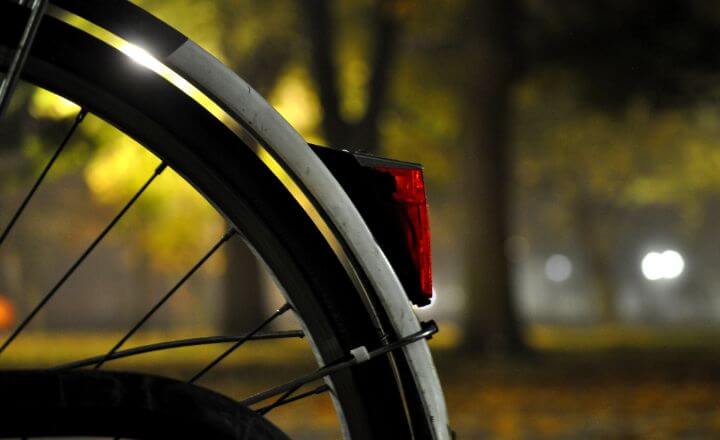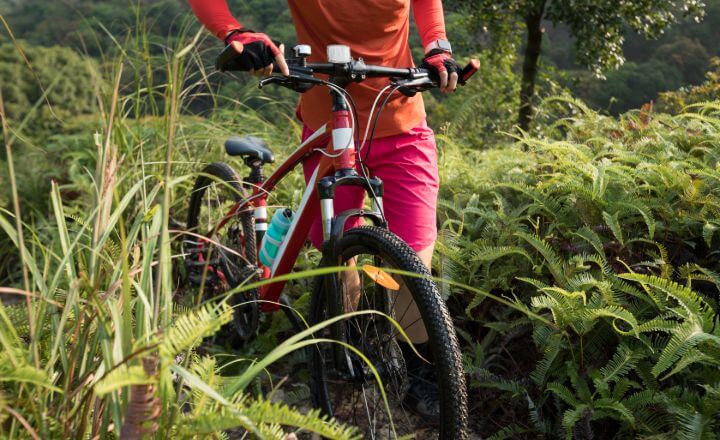(Last updated on February 7th, 2023)
If bike wheel sizes seem confusing, it’s because they are! The wheel size you need for your bike is determined by many different factors, including the type and size of bike you are riding, the kind of terrain you are riding on, and the tires you’ll be putting on them.
For example, my women’s specific Canyon Ultimate in XXXS needs a 650b wheel with a max tire size of 30 mm. However, the larger unisex models require a 700C wheel with the same max tire width. The smaller wheels certainly will spin up to speed faster, but the larger wheels have better momentum and can ride over larger obstacles more easily.
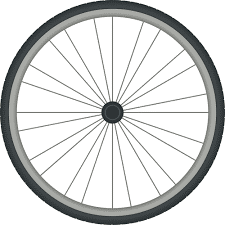
On the other hand, my XS unisex aero bike uses standard 700C wheels with 25mm tires. It takes a little more effort to spin up to speed, but the tires carry their momentum better. I might be able to fit the 650b wheels on my aero bike, but I definitely could not fit the 700C wheels on my Canyon.
Both sizes have their benefits, of course, and both have their drawbacks. So how do you know which wheel size you need?
In this article, we’re going to talk about the different bike wheel sizes. We’ll talk about the different standards for measuring wheel sizes, show you the most common bike wheel sizes, and compare them in a bike wheel size chart so you can get a feel for how the different tires stack up. So let’s get started and make this complicated subject a little bit less confusing.
Why Is Bike Wheel Size Important?
Bike wheel size is essential for a number of reasons.
- Bike size and bike geometry affect what size wheel you can use with your bike frame. Smaller bike frames may require smaller wheels and simply won’t fit a larger wheel in the bike’s frame. Bikes that use size-specific geometry may use smaller wheels on their smaller bikes and standard wheels on their average-sized bikes. On the other hand, sometimes, with a gravel bike, you’ll want a smaller wheel so you can fit a wider tire into the same frame space.
- Road terrain affects what size wheel you need. If your terrain is very bumpy, you may need a smaller wheel with a wider tire. A larger wheel with a smaller tire may work better if your terrain is smooth.
- Bike type and brake type affect what size wheel you will need. For example, rim brakes will limit the width of the tire you can fit on your bike, while disc brakes give you more space for wider tires (and wheels).
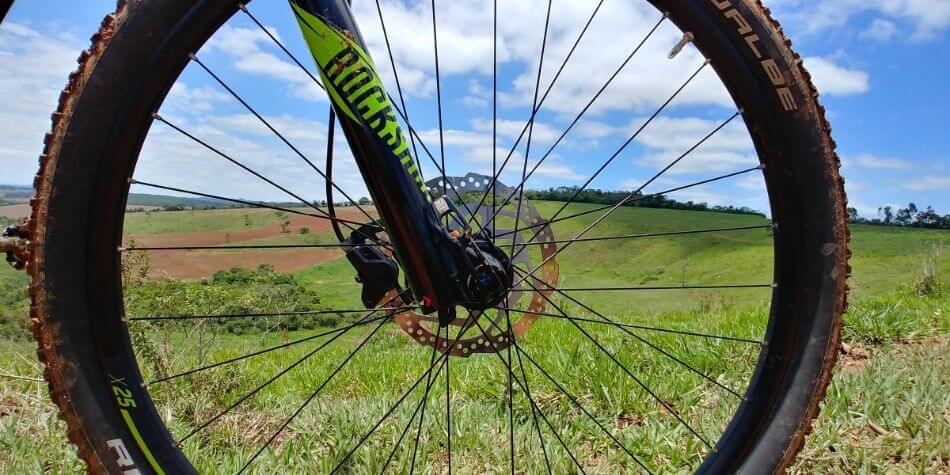
Understanding the Different Standards of Bike Wheel Size
There are several different ways that bike wheels are measured, which can make things even more confusing. Other countries initially had their own methods for sizing bike wheels, and for a long time, wheels labeled as the same size weren’t necessarily the same size. So it can be difficult and confusing to figure out what bike wheel size you need for your bike.
International Organization for Standardization
The ISO is probably the most common system for sizing wheels and tires. It was developed with the European Tyre and Rim Technical Organization, also known as ETRTO. The ISO standard refers to the diameter of the wheel in millimeters, not the dimensions of the tire that you put on it.
The French Standard
The French Standard is most often used with vintage bike models. However, the letters in the French Standard refer to the widths of the wheel. For example, a 700C tire is wider than a 700B tire. Likewise, a 700B tire is wider than 700A. However, 700C is the most common size for road tires today. You’ll sometimes see 650Bs and 650Cs, but the other letter sizes have mostly faded out.
The American Standard
This is an inch-based notation you’ll often see by big-box retailers for children’s bikes and for mountain bikes. So, for example, you may see 24” tires on a junior bike and 20” tires on a child’s bike.
Finding My Bike Wheel Size
If you are looking for the size of your bike wheel, check out your rim. Most wheels come with a sticker that lists the rim size on them.
If not, you can look on the webpage of the manufacturer of your bike. Under the geometry and components of your specific bike, the manufacturer will list what size stock wheels come on your bike and what size wheels your bike can accommodate.
For example, some bikes can fit both 650b as well as 700c wheels. You may be able to purchase both wheelsets with your new bike so you can use it for both gravel and road.
Of course, if you get stuck and just don’t know what size wheel you have, you can always make a visit to your local bike shop – they can help you figure out what size wheels you have and what you need if you are purchasing new wheels or a new bike.
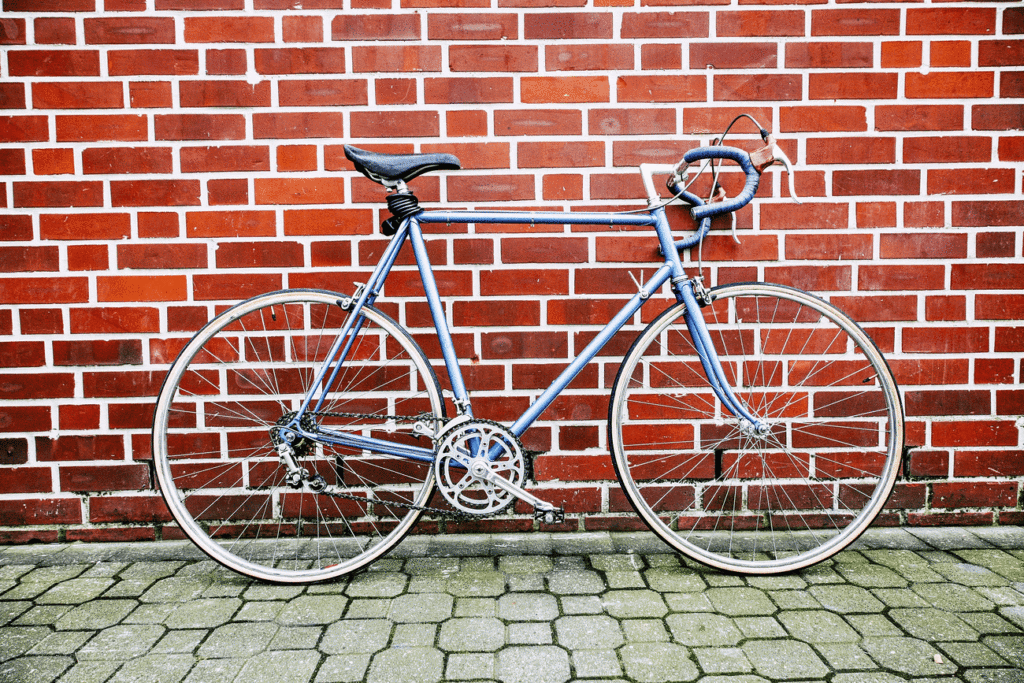
Most Common Bike Wheel Sizes
Bike wheel sizes have settled into a few popular sizes. You can see these popular sizes in the bike wheel size chart below. In the chart, we’ll give you the American size, the ISO equivalent, and the French equivalent, where applicable. We’ll also tell you what each size is typically used for.
Bike Wheel Size Chart
| American Inches | ISO | French | Use |
| 16 | 305 MM | Children’s Bikes and small folding bikes | |
| 20 | 406MM | BMX and Folding Bikes | |
| 24 | 507 MM | Larger BMX bikes or junior mountain bikes | |
| 26 | 559 MM | Cruisers and older mountain bikes | |
| 27 | 630 MM | Vintage bikes | |
| 27.5 | 584 MM | 650B | Found on smaller road and gravel bikes as well as mountain bikes |
| 29 | 622 MM | 700C | Commonly Found on Standard Road and Mountain Bikes |
| 32 | 686 MM | Custom-sized frames | |
| 36 | 787 MM | Custom-sized frames |
The Most Common Wheel Sizes Explained (in order of popularity)
29″ / 700c (ISO 622 mm)
The most common size bike wheel for a road bike is 700C, also known as ISO622 mm. However, more recently, mountain bikes have also taken on ISO 622 MM, but in the mountain biking world, it’s typically referred to as 29”.
And while the diameter of both types of wheels is the same, mountain bike rims are typically wider to accommodate wider tires, and road bike rims generally are thinner.
27.5″ / 650b Wheels (ISO 584 mm)
The second most common size is probably ISO 584MM, known as 27.5” in the mountain biking world and 650B in the gravel and road world.
Typically, 650b wheels are used on extra small road bikes which have smaller frames, or on gravel and mountain bikes to accommodate wider tires.
20″ Wheels (ISO 406 mm)
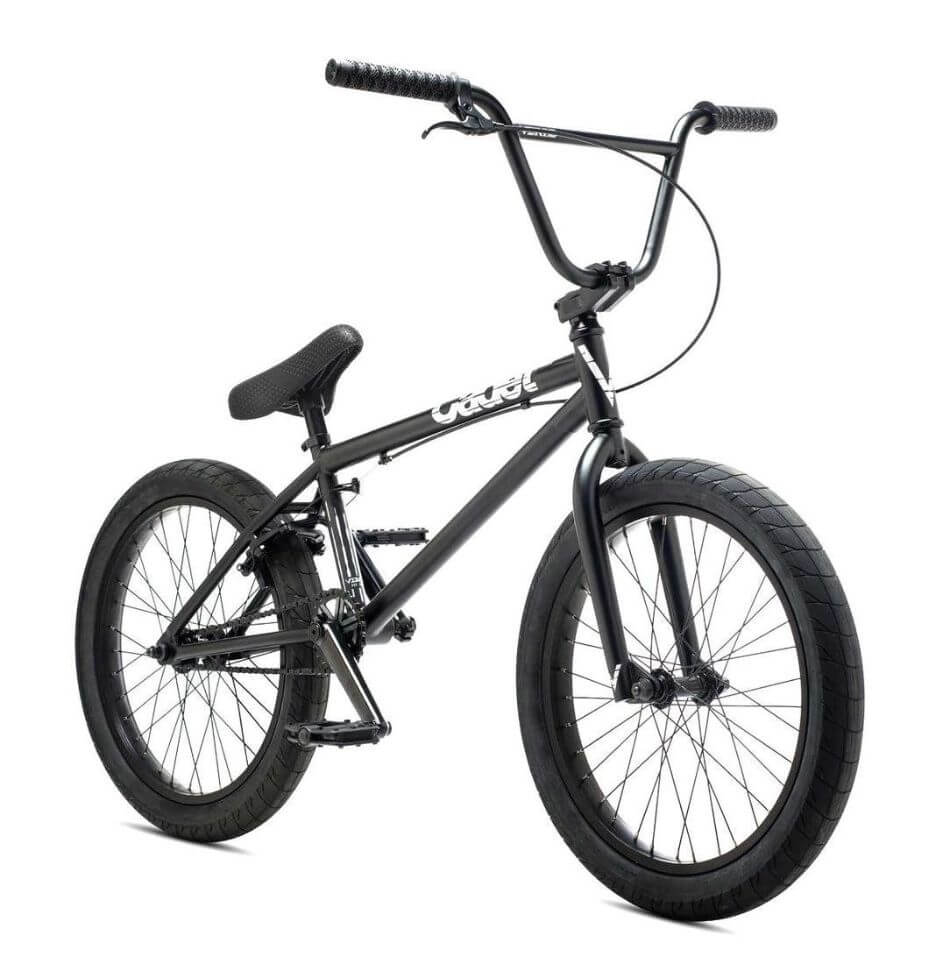
BMX bikes and folding bikes with small wheels often have 20” wheels or ISO 406. As a result, they’re easier for maneuvering and doing tricks, but of course, they don’t do as well over rocks and obstacles as their larger counterparts.
16″ Wheels (ISO 305 mm)
This wheel size is usually found on children’s bikes, but they are also sometimes found on adult folding bikes. However, they don’t handle like a full-size wheel and can be subject to steering issues and obstacles. In addition, they are difficult to climb hills with and will have trouble keeping up with bikes with larger wheels.
24″ Wheels (ISO 507 mm)
These are not very common, but you may find them on junior mountain bikes and some BMX models for larger riders.
26″ Wheels (ISO 559 mm)
These wheels were initially used for cruisers and mountain bike wheels.
27″ (ISO 630mm)
This size is pretty rare and generally found only on vintage bicycles.
Oversized
32″ (ISO 686 mm) and 36″ (ISO 787 mm)
These oversized wheels are generally used on custom bikes for extremely tall riders.
Tips on Bike Wheel Sizing
If you ride a typical, average-sized road bike, you’ll probably have standard 700C bike wheels, which will use anywhere from 23 to 28mm. Some can go a little wider, making it possible to use gravel or CX tires. A standard mountain bike will use either a 27.5 or 29-inch wheel. Most mountain bikers won’t use the French 700C to describe their wheels, though, even though it is the same as a 29”.
If you ride a women’s specific or a very small frame, you might have 650b wheels.
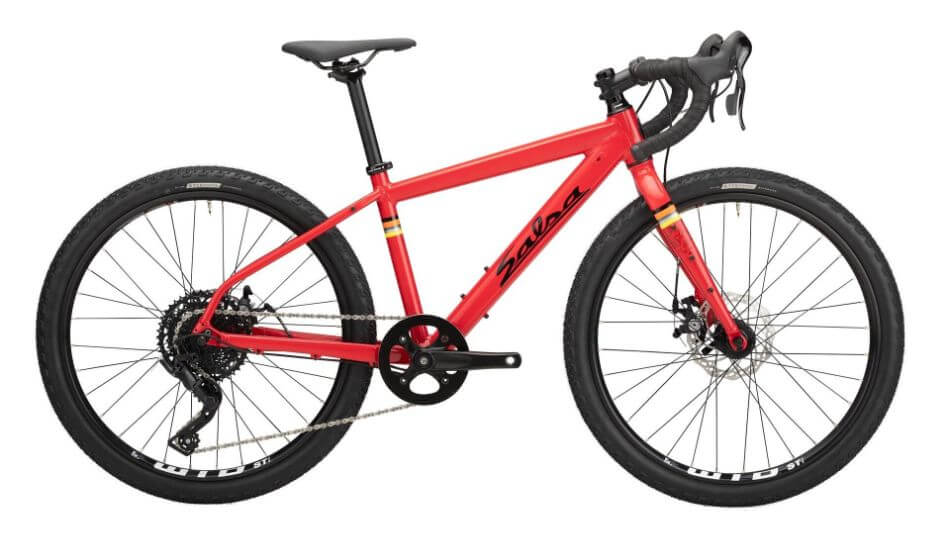
A few manufacturers, such as Salsa, make junior mountain and gravel bikes that will take a 24-inch wheel. For example, my Salsa Journeyman 24 is a gravel bike for riders under five feet tall and uses a 24inch wheel. Their standard Salsa Journeyman uses a 650b instead. The 24inch wheels have a more challenging time keeping up their speed than the larger wheeled version.
Final Thoughts on Wheel Sizes
Most of the time, you don’t really have to worry about your wheel size. If you purchase a new bike, it will come with a stock pair of wheels that are the right size for the bike. But in most cases, you’ll find your standard road bike has 700c wheels and your mountain bike will probably have 27.5 inch wheels.
You May Also Like:
Frequently Asked Questions
If you need to know your bike’s wheel size, there are a few places you can look. First, look on the rim itself. If it isn’t there, there might be a sticker on your bike’s frame. You might also check the manufacturer’s website under tech specs or look in your user manual.
The most common wheel size for road bikes is a 700c. The most common sizes for a mountain bike are typically 29 or 27.5 inch tires.
Most hybrid bikes will use a 700c wheel with a knobby tire for extra grip. However, some hybrid bikes will have a tire that is as small as 26 inches.
Folding bikes tend to have smaller wheels to save on space. Typically, you’ll find either 20inch or 16inch tires on these types of bikes.
650bs are a little bit smaller than 700c wheels. They typically serve 2 purposes. For example, you might find a 650b wheel on a very small road bike, such as a Canyon Ultimate 3x. More commonly, you’ll find 650b wheels with a wide, grippy tire on gravel bikes. This gives more room for an extra wide tire on the bike.

Amanda Whittington is an expert writer, impassioned cyclist, and musician. Coming from a diverse educational background, Amanda discovered a deep-rooted passion for encouraging others through her love of all things cycling, writing, and inspiring hope.
You’ll likely find Amanda pouring over bike specs, comparing the hottest cycling tech, and sporting the latest jerseys while juggling the demands of her editorial calendar, training schedule, tiny homestead, and 6 busy kids.
She spends her free time absorbed in her own gardening and fitness, cycling, and reading, all while encouraging adoption and foster care, championing the underdog, and of course, working with her chickens and goats.

